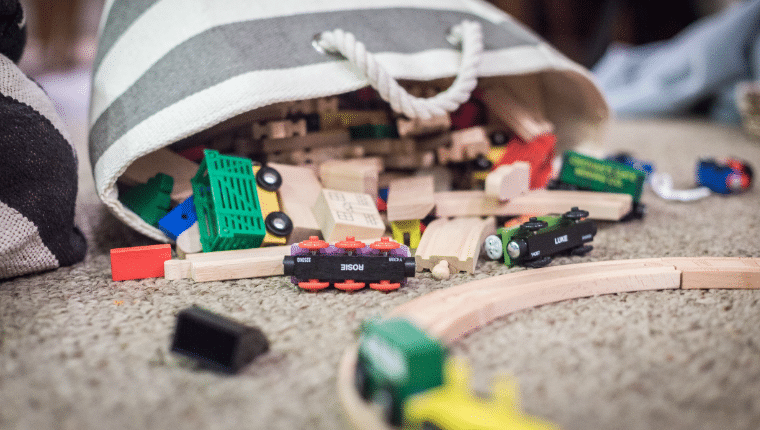‘Heuristic’ comes from the Greek word “Eurisko” meaning “Serves to discover or reaches understanding of”. The concept of Heuristic play is centred around the essential question of “What is it”?
Children are offered a variety of objects which can be viewed as junk and they then explore these using their five senses to form understandings of everyday life and how things around us can be used in a variety of ways. These objects are easily obtainable and generally cheap to purchase. They can be natural or synthetic, used alone or combined with other materials.
Objects such as: Different size containers and boxes, kitchen utensils, pegs, cotton reels of various sizes, chain, keys, rope, ribbon, different textured pieces of material, stones, shells, feathers, pine cones, curtain rings and on. The list is endless!
Loose Parts play is similar, however it encompasses larger objects as well, such as: cardboard boxes, tree stumps, tyres, buckets, sand, wood, gravel and pallets. By definition loose parts are materials that can be moved, carried, combined, redesigned, lined up, taken apart and put back together in multiple ways.
The theory of loose parts was first proposed in the 1970’s by architect Simon Nicholson. Nicholson believed that it is the loose parts in our environment that empower our creativity.
These objects offer a variety of different dimensions and uses. They can be adapted and manipulated in many different ways. There is no predetermined outcome or right or wrong way to interact which is fantastic for the developing brains and skills of children. Instead, this type of play encourages exploration, experimentation, imagination, open-ended learning and discovery. It further develops a child’s creativity, problem solving abilities, negotiation, competence and fine motor skills much better than any modern toy by allowing them to practice stacking, matching, ordering, pairing, filling and emptying. Exploring questions such as: “Will this fit in here”? Introduces children to the maths concepts of volume and capacity. A child’s exploration during this play is only limited by their imagination and developmental skill level. As a child’s development is so rapid during the early years offering the same set of objects a week later can show a whole new set of different ways the child interacts and explores.
I challenge you all to introduce yourselves and the children around you to Heuristic and Loose Parts play. Sit back and just observe the magic taking place…I think you’ll all be amazed.


